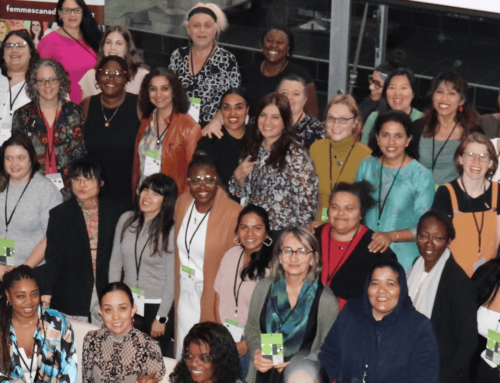Universal Basic Income or Basic Income is not a new idea, but the conversation has come to the forefront due to the COVID-19 pandemic.
“One thing the pandemic has given us is the opportunity to think about what could be different. It’s really exposed the cracks in our systems,” says Director of Community Initiatives at the Canadian Women’s Foundation, Keetha Mercer.
“We see that when we see things like the very fast creation of the CERB benefit … if you can create CERB in two weeks, why is a basic income pilot not possible?”
What is Universal Basic Income?
Of course, basic income is not CERB. It’s not a “welfare” approach at all. Universal Basic Income, or UBI, means that every citizen receives a set amount of money on a regular basis, enough to meet their basic needs whether or not they are employed.
No country currently implements a truly universal basic income program, but several pilots have proven it’s efficacy to reduce poverty. This includes the pilot in the Province of Ontario.
Some have said that a basic income program would be too expensive to run. Some have said that it would lead people to be less motivated to work and decrease productivity and GDP.
However, in a Finish pilot program that ran in 2017 and 2018, researchers found that people on a basic income worked more than those on unemployment benefits.
Here in Canada, advocates of a universal income pilot have argued that it would cost the government less than CERB benefits.
And, in addition to its human toll, maintaining a society where a significant number of people live in poverty is expensive. It’s estimated that poverty cost the Ontario government $33 billion last year.
What are the Gendered Implication of UBI?
Systems of oppression like poverty and patriarchy are deeply intertwined. So it’s no surprise that women often bear the brunt of poverty in Canada. How might UBI reduce women’s poverty?
For one, it could enable them to participate in the workforce. Many economists believe that GDP expansion over the last 30 years is directly tied to women’s increased participation in the labor force. Giving women resources to supplement their unpaid work enables them to do paid work.
“Quebec brought in low-cost childcare up until 2008, and they saw a measurable increase in GDP,” says Ann Decter, Senior Director of Community Initiatives at the Canadian Women’s Foundation. “They saw a huge increase in single mothers in the workforce, and the percentage of mothers on social assistance dropped by more than 50%. If 50% of your workforce is women … your economic prosperity is tied to those women being in the workforce.”
There is only a limited amount of time in the day, and much of the unpaid home and care work women keeps them from full participation in the paid workforce or accessing more education. For example, it’s difficult to pay tuition as well as childcare, and it’s difficult to go to work if you can’t afford childcare to begin with. Paying women for the key work they’re doing in their communities for free helps them attain their professional and academic goals.
In this country, almost 2 million women live in poverty. In our Canada-wide survey of women and Two Spirit, trans, and non-binary people entitled Until All Of Us Have Made It, nearly half of the respondents said they did not attain the level of education they wanted to. That percentage goes up to 62% for Indigenous respondents, 60% for respondents with physical disabilities, and 64% for respondents with other disabilities. Respondents say that affordability and time get in their way, and money for education and living expenses would help. Access to education is related to access to good jobs and quality of life–achieving our educational dreams truly matters and is worth more investment in as a nation.
In the end, universal basic income could effectively “raise the floor” for everyone, giving them more of an equal footing and more resources to begin working towards education, stable housing, and childcare. This could make a huge difference in breaking the costly cycle of gendered poverty.
Want to learn more? Listen to this episode of our podcast.
Learn more:







